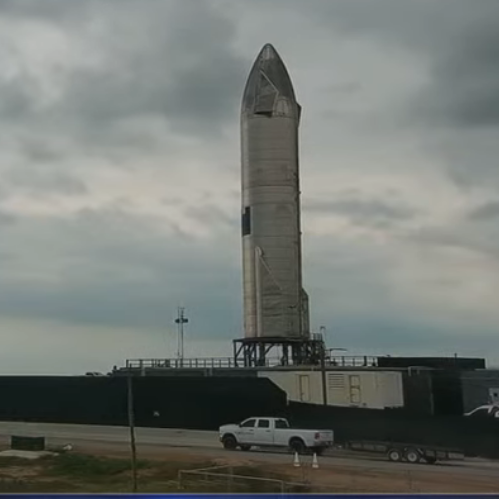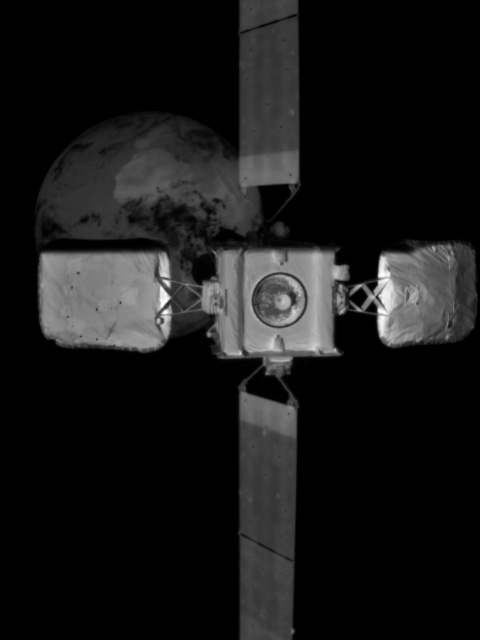Dynetics has joined Blue Origin in protesting Starship contract by NASA
Capitalism in space? Dynetics today joined Blue Origin in protesting NASA’s decision to award SpaceX the sole contract for building a manned lunar lander, using its Starship spacecraft.
Though the company’s protest did not going into specifics, it appears that Dynetics main complaint is the decision to not award two companies a contract, as originally planned. Even so, these factors make Dynetics bid quite problematic:
Of the three bidders, Dynetics was the lowest ranked. It had a technical rating of “Marginal,” one step below the “Acceptable” that Blue Origin and SpaceX received. Its Management rating of “Very Good” was the same as Blue Origin but one step below SpaceX’s “Outstanding.”
In the source selection statement, Kathy Lueders, NASA associate administrator for human exploration and operations, said the Dynetics lander “suffered from a number of serious drawbacks” that increased risk. The lander was overweight, which at this early stage of development “calls into question the feasibility of Dynetics’ mission architecture and its ability to successfully close its mission as proposed,” she wrote. The evaluation also questioned the maturity of the technology for performing in-space cryogenic fluid transfer required to refuel the lander, as the company planned.
Lueders concluded that “while Dynetics’ proposal does have some meritorious technical and management attributes, it is overall of limited merit and is only somewhat in alignment with the objectives as set forth in this solicitation.” The document only stated that Dynetics’ proposal had a price “significantly higher” than Blue Origin’s proposal, which in turn was significantly higher than SpaceX’s winning bid of $2.89 billion. Blue Origin disclosed in its protest that it bid $5.99 billion. [emphasis mine]
So, Dynetics proposed to build an overweight lander and do it at the highest price. If anything this protest enhances Blue Origin’s protest. It certainly doesn’t do much for Dynetics.
In fact, a good metaphor for the bidding here would be to imagine three vacuum cleaner salesman arriving at your door, all at the same time. One salesman, Mr. Newbie Dynetics, offers you a vacuum cleaner (as yet unbuilt in any form) that as presently designed will only be able to suck in about two-thirds of the dirt on your floor, and demands you pay $800 for it. The second salesman, Jeff “Blue” Origin, says his design (also unbuilt) is far better because they’ve done some successful tests of a tiny handheld prototype, and in addition he’ll only charge you $599 for it.
Neither Newbie or Jeff have any financing, so you will have to foot the entire bill.
The third salesman, Elon Starship, shows up with a full size prototype that while it has some problems, actually functions, and has been tested a number of times already. He also has more than two thirds of his development already financed by others, and only wants to charge you $289.
Who would you pick?
Since I know my readers are neither elected officials nor government officials in Washington and therefore know how to use their brains intelligently, I suspect I know.
We shall soon find out just how smart or dumb those elected officials or government officials in Washington really are.
Capitalism in space? Dynetics today joined Blue Origin in protesting NASA’s decision to award SpaceX the sole contract for building a manned lunar lander, using its Starship spacecraft.
Though the company’s protest did not going into specifics, it appears that Dynetics main complaint is the decision to not award two companies a contract, as originally planned. Even so, these factors make Dynetics bid quite problematic:
Of the three bidders, Dynetics was the lowest ranked. It had a technical rating of “Marginal,” one step below the “Acceptable” that Blue Origin and SpaceX received. Its Management rating of “Very Good” was the same as Blue Origin but one step below SpaceX’s “Outstanding.”
In the source selection statement, Kathy Lueders, NASA associate administrator for human exploration and operations, said the Dynetics lander “suffered from a number of serious drawbacks” that increased risk. The lander was overweight, which at this early stage of development “calls into question the feasibility of Dynetics’ mission architecture and its ability to successfully close its mission as proposed,” she wrote. The evaluation also questioned the maturity of the technology for performing in-space cryogenic fluid transfer required to refuel the lander, as the company planned.
Lueders concluded that “while Dynetics’ proposal does have some meritorious technical and management attributes, it is overall of limited merit and is only somewhat in alignment with the objectives as set forth in this solicitation.” The document only stated that Dynetics’ proposal had a price “significantly higher” than Blue Origin’s proposal, which in turn was significantly higher than SpaceX’s winning bid of $2.89 billion. Blue Origin disclosed in its protest that it bid $5.99 billion. [emphasis mine]
So, Dynetics proposed to build an overweight lander and do it at the highest price. If anything this protest enhances Blue Origin’s protest. It certainly doesn’t do much for Dynetics.
In fact, a good metaphor for the bidding here would be to imagine three vacuum cleaner salesman arriving at your door, all at the same time. One salesman, Mr. Newbie Dynetics, offers you a vacuum cleaner (as yet unbuilt in any form) that as presently designed will only be able to suck in about two-thirds of the dirt on your floor, and demands you pay $800 for it. The second salesman, Jeff “Blue” Origin, says his design (also unbuilt) is far better because they’ve done some successful tests of a tiny handheld prototype, and in addition he’ll only charge you $599 for it.
Neither Newbie or Jeff have any financing, so you will have to foot the entire bill.
The third salesman, Elon Starship, shows up with a full size prototype that while it has some problems, actually functions, and has been tested a number of times already. He also has more than two thirds of his development already financed by others, and only wants to charge you $289.
Who would you pick?
Since I know my readers are neither elected officials nor government officials in Washington and therefore know how to use their brains intelligently, I suspect I know.
We shall soon find out just how smart or dumb those elected officials or government officials in Washington really are.


